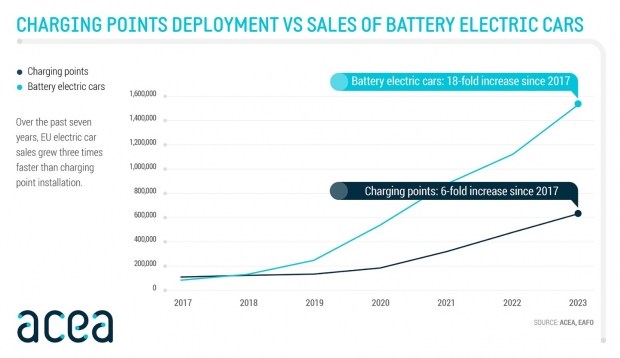The Acea study analyzes the number of charging stations for electric cars in Europe: how many there are and how many will be needed.
A three- to eight-fold increase in the number of charging stations needed across Europe is needed to meet the government's “CO2 reduction” targets. At the current rate of establishment, such goals seem too ambitious.
Acea, the association that unites the car manufacturers of the Old Continent, sounds the alarm and talks about “an alarming gap between the current availability of public charging stations for electric cars in the EU and what will really be needed”.
In particular, just over 150,000 “refueling” stations appeared in 2023, an average of about 3,000 per week, bringing the total to 630,000. However, according to the European Commission, 3.5 million charging stations will be needed by 2030 , or 410,000 installations per year (or almost 8,000 per week), which is three times more than today.
But Acea is even more pessimistic and says up to 8.8 million will be needed: in practice 1.2 million a year (22,000 a week), or eight times more than today. Between 2017 and 2023, the association adds, sales of electric vehicles in the EU grew three times faster than the installation of charging stations.
“Easy access to public charging stations is not a 'bonus', but an important condition for the decarbonisation of road transport, in addition to supporting the market and a competitive production base in Europe.”
“Investment in public charging infrastructure must be increased urgently if we are to close the infrastructure gap and meet our climate goals”– believes Sigrid De Vries, CEO of Acea.


